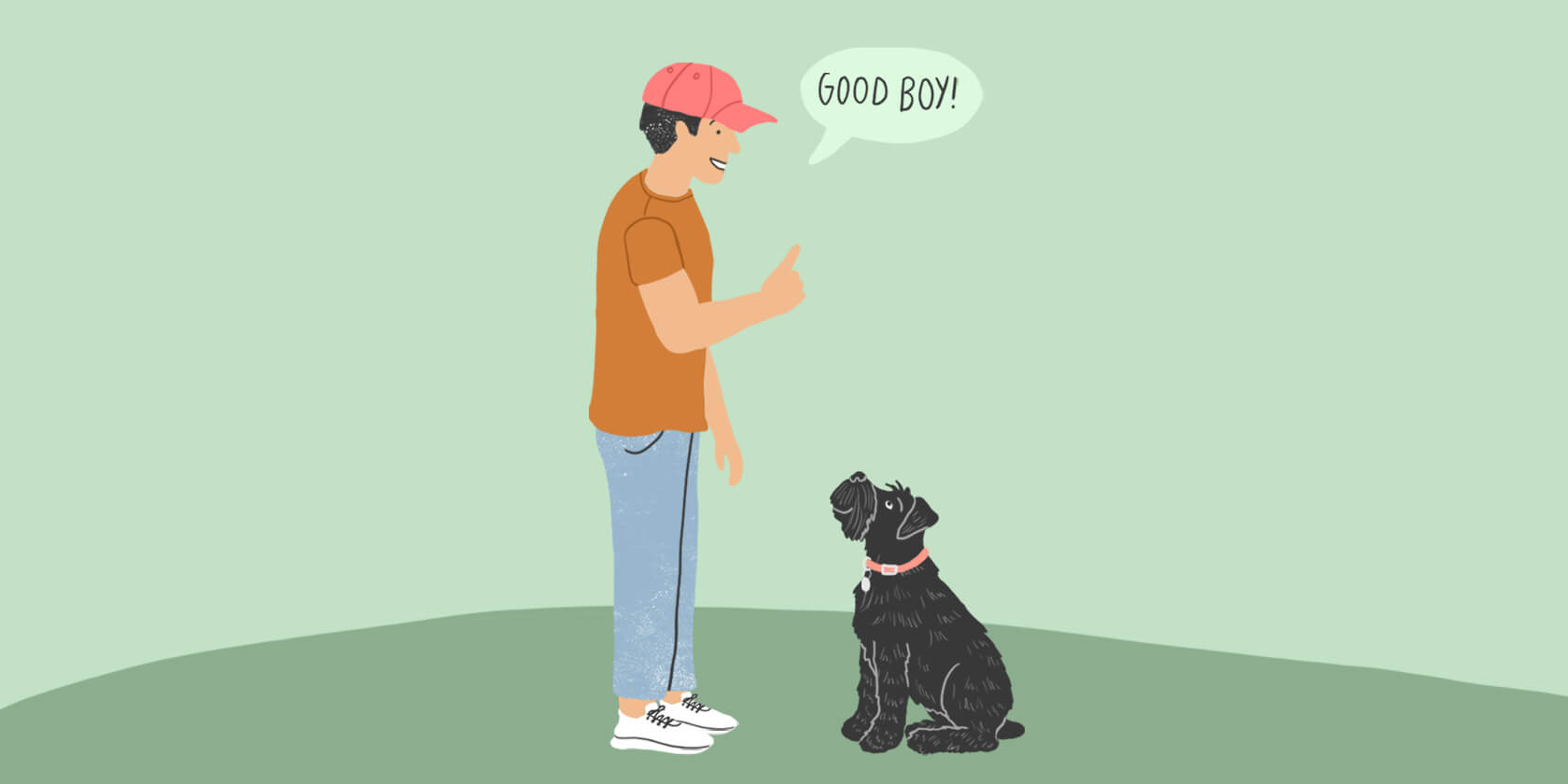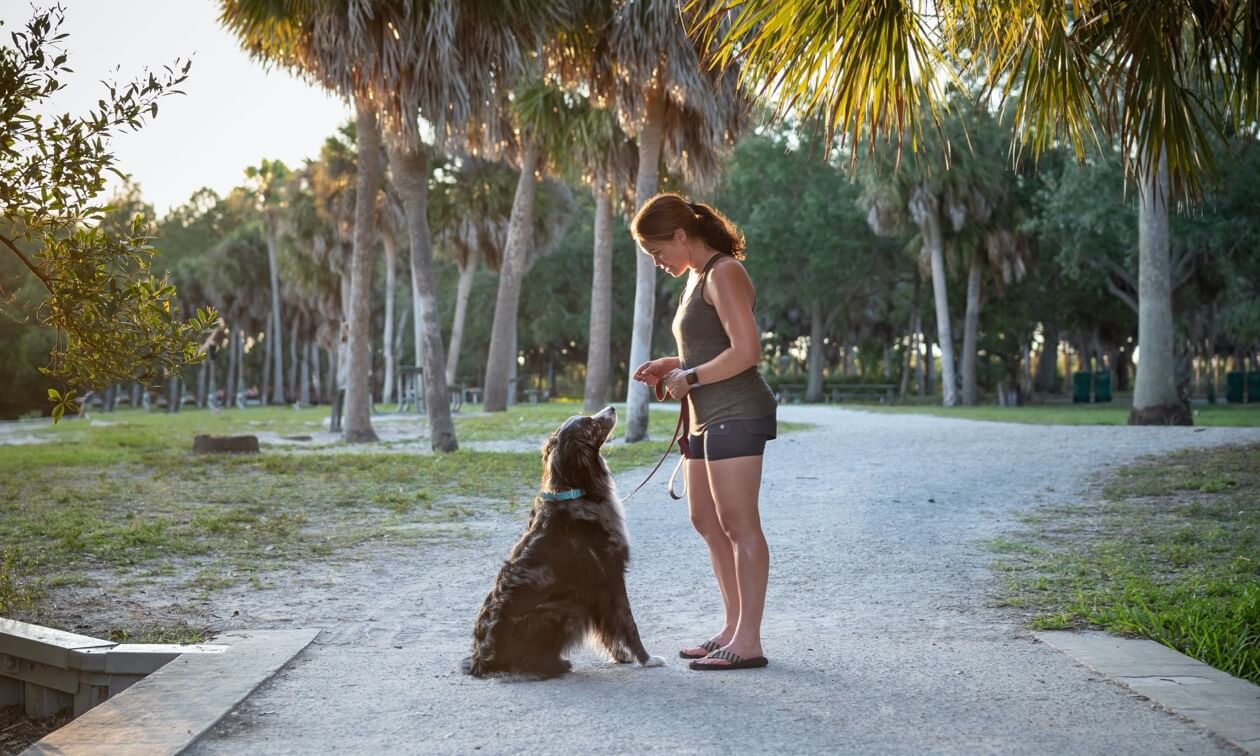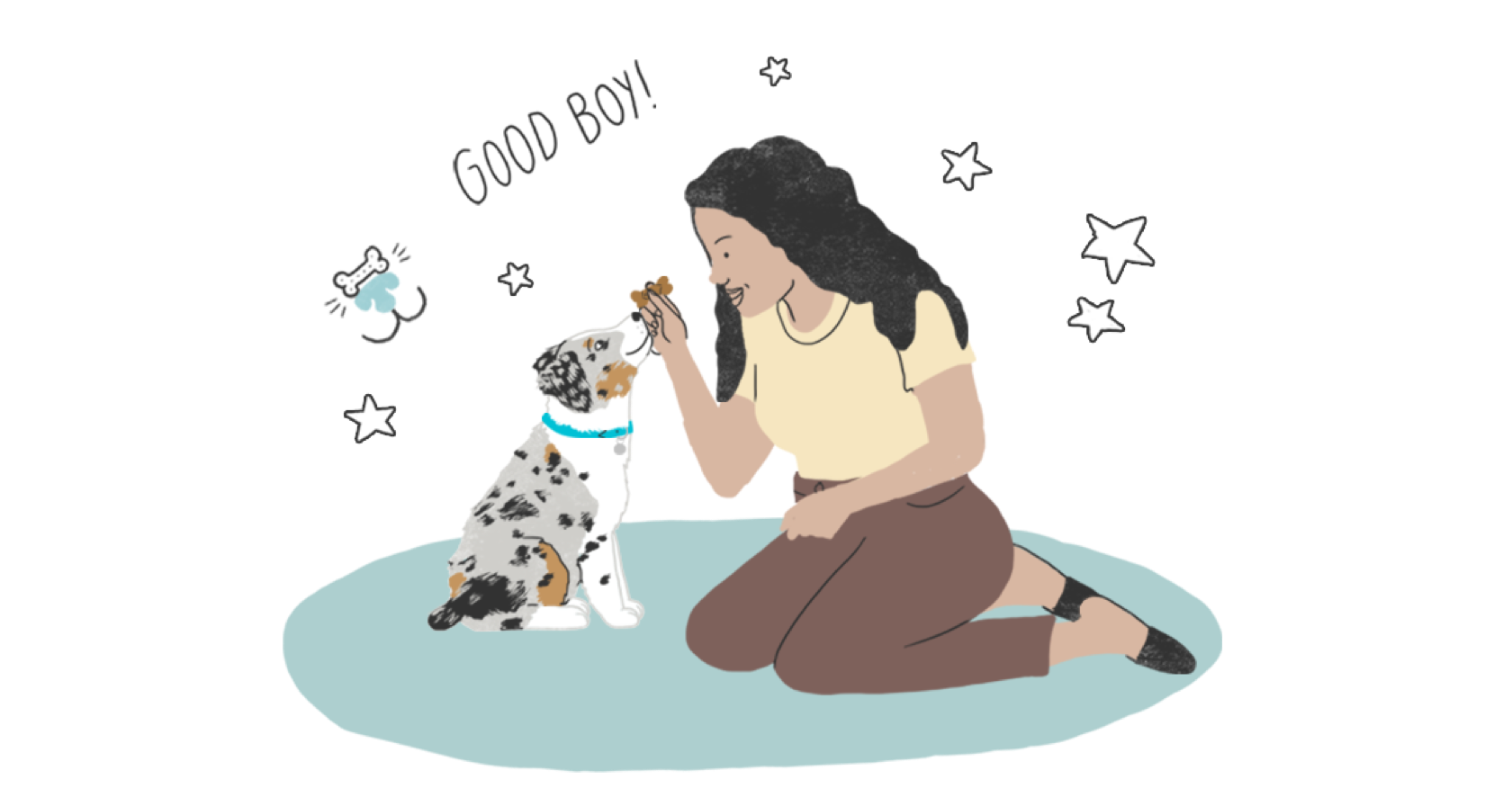Training a puppy to sit when they're young is ideal, but your adult dog can benefit from learning this valuable cue, too. Whether your dog is six weeks, six months, or six years old, it's never too late to teach them to sit.
There are many benefits to teaching a solid "sit." Learning and executing any behavior is good brain work for your dog. It's also the perfect way to practice impulse control, especially if your dog is a jumper. It's a safety tool as well — being able to stop your dog in their tracks to sit can keep them from barreling into a dangerous situation, like an intersection or out an open front door. What if you and your pup are in a situation with children, adults, or other animals who are nervous around dogs? A good "sit" at a distance can ease their anxiety and make them more comfortable around your dog.
Do You Need Supplies to Teach Your Dog to Sit?
How to teach a dog to sit: You only need two things to start the process of teaching your dog to sit.
A clicker or marker word will be used to mark the instant your dog performs the behavior you want. Think of it like a camera taking a photo so you can show your dog, “Yes! See what you did right here? That’s what I’m rewarding you for.” If your dog is already clicker trained, use your clicker. If not, pick a short, simple marker word like “yes.”
Treats will be your dog’s reward when they perform those behaviors you’re marking. Small treats are best, since you want something they can eat quickly and then return their attention to you. If you’re doing a lot of training with treats, make sure you keep an eye on calories to keep your pet at a healthy weight. Keep your treats in a pouch or nearby container so you can reach them easily as you’re working with your dog.
If your dog is on a special diet and can’t have treats, you can use a little of their food — a piece of kibble or a lick of wet food off a spoon or rolled into a small “meatball” works just fine. Other non-food rewards can include verbal praise, petting, brushing, and even playing. Food is often the easiest and most valuable treat for your dog when learning a new behavior and will make training happen faster.

4 Steps to Teach Your Dog to Sit Using A Visual Cue
The luring technique is a great way to teach a sit cue, shaping your dog’s reactions to the lure into the final behavior you want.
- Place a treat in your closed hand.
- Hold your hand close to your dog’s nose so they can smell the treat.
- Slowly guide your hand from your dog’s nose to their forehead. As they follow the treat, they’ll lift their nose and drop their rear, settling into a sit position.
- The instant they sit, click or use your marker word and give a treat right away.
You’ll repeat these steps as your dog quickly learns that they’re being rewarded for placing their backside on the ground. They should also start to associate the movement of your hand, from nose toward the forehead, as the cue to sit. You’ll see your dog start to sit earlier in the hand signal.
After some practice, you can remove the treat lure from your hand and just give the hand signal, mark with your clicker or word when they sit, and then grab a treat to give them from your pocket or treat pouch. When they have it down cold, you can add a verbal cue.
Adding a Verbal Cue for Your Dog’s Sit
Now that your dog understands the concept of sitting based on your hand signal, you can start to replace it with a verbal cue.
Give the verbal cue “sit” before you start the hand cue. Continue through the hand motion from nose to forehead, clicking or marking when your dog sits and then rewarding them.
Repeat this step a few times and then try giving the verbal cue “sit” with NO hand cue. Count to three in your head. If your dog sits before you get to three, mark and reward. If they don’t sit, give the hand signal. Be sure to give lots of rewards to reinforce this change. If they don’t respond to the verbal cue alone, just keep practicing. Eventually, they’ll catch on as they make the association.
As you move out of the training stage and into using the sit cue in everyday life, you can also start to fade out the treats. It’s still important to reward your dog for following cues. But you can transition to verbal praise, playing, and other things your dog loves.
You can also start using this cue for impulse control. Give a “sit” before opening the door to go on a walk or as someone approaches your dog. You’ll very quickly see how valuable this simple trained cue really is.
ZPC-01962R1



